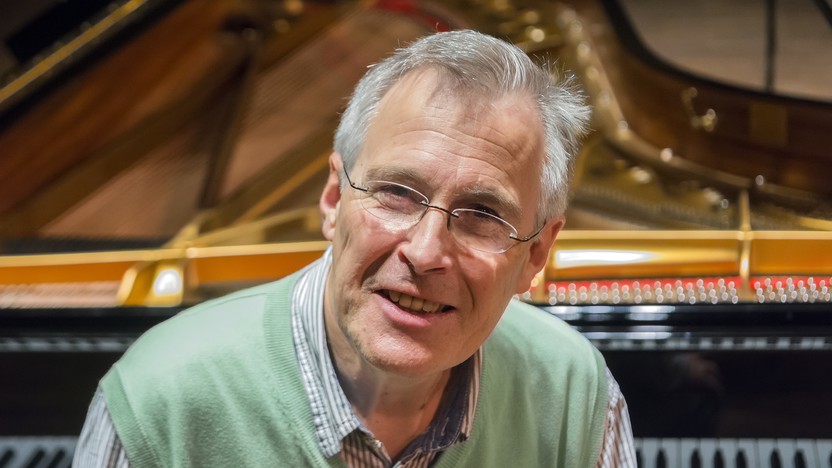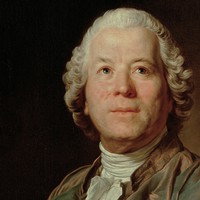Celebrating Christian Zacharias: Haydn, Gluck and Mozart

Sponsored By
- May 7, 2016


Sponsored By

 Listen to Audio
Listen to Audio
Haydn achieved celebrity status during his long tenure as Kapellmeister to the Esterházy family, and in 1779 he successfully negotiated a new contract that allowed him to sell his music more freely around Europe. It soon led to lucrative commissions like the one from a young French count, Claude-François-Marie Rigolet, who requested six symphonies that Haydn composed in 1785 and 1786. These “Paris” Symphonies earned Haydn the handsome sum of 25 louis d’or each, plus additional fees for publication. (By comparison, Mozart earned only 5 louis d’or for his “Paris” Symphony from 1778.) On the success of the six original works for Paris, the same patron asked Haydn for another set of three symphonies, which became Nos. 90-92, Haydn’s last symphonies before his twelve legendary works for London.
Haydn’s “Paris” symphonies capitalized on the large orchestra employed for the Concerts de la Loge Olympique, an ensemble that far outnumbered the private Esterházy ensemble. In the slow introduction that begins the Symphony No. 84, the forte and piano contrasts would have been all the more impressive in Paris with the expanded string sections and an ample woodwind complement (albeit still no clarinets, trumpets, or timpani, which only became standard by the last of the London works). The sharp contrasts continue in the body of the movement, in which stout comments interject between phrases of the flowing primary theme. This movement is a somewhat rare example of a monothematic sonata-allegro form (meaning that Haydn used the same theme in opposing keys for both the main elements of the form), but he still created variety through the orchestration, shifting the theme from its first appearance in the violins to a transposed version introduced by oboes and bassoons.
The Andante second movement explores imaginative variations on a theme, including an unexpectedly early shift to the minor key (heralded by the delayed entrance of the winds) and a deceptive ending featuring woodwind variants of the theme intoned over plucked strings. The Menuet is a hearty specimen typical of Haydn, with the flavor of the rustic Austrian ländler intruding upon the more genteel strains of the French court dance. The finale’s examples of long, anticipatory piano passages answered by forte arrivals are made even more dramatic when the phrases run together, the last note of one also serving as the first note of the next.
Aaron Grad ©2016
 Listen to Audio
Listen to Audio
Christoph Gluck was pivotal in developing the genres of opera and ballet as we know them today. He enrolled at the University of Prague in 1731 but left without a degree, beginning a journeyman phase of his career that carried him through Vienna, Milan, London, and various other theater hotspots in Europe. He landed back in Vienna, and in 1755 he became the music director of the Burgtheater, where he was responsible for leading concerts, operas and ballets. Working with librettist Raniero di Calzabigi, Gluck revitalized serious opera at a time when the predominant Italian style had become bloated and formulaic. It is hard to overstate the influence of the work Gluck produced in Vienna and later in Paris, especially on Mozart, who followed the Gluck formula to the letter in his breakthrough opera, Idomeneo. The first of Gluck’s so-called “reform” operas was Orfeo ed Euridice, first staged in Vienna in 1762, and revised for Paris in 1774 as Orphée et Eurydice.
The appeal of Orfeo/Orphée—or Orpheus, as he is known in English—as an operatic protagonist is self-evident: he was mythology’s greatest singer, able to charm even the gods with his voice. In a scene set in “a terrifying grotto beyond the river Cocytus, hidden in the distance by thick smoke billowing out of the grotto,” Orpheus convinces the Furies to let him pass to the Elysian Fields so he can rescue his beloved (and recently deceased) Eurydice. Gluck actually recycled the harrowing portion of this scene known as “The Dance of the Furies” from his earlier ballet setting of Don Juan, at the point when the unrepentant libertine is sucked down into hell.
In Act III, Scene I, Orpheus has reached Eurydice and is leading her back to the realm of the living, with the stipulation that if he looks at her she will be lost forever. Alas, she faints, he looks, and she dies. Orpheus’ subsequent aria, beginning with the lament, “I have lost my Eurydice,” is an emotional enigma—a rare example of mourning in a major key.
“The Dance of the Blessed Spirits” returns to Act II, once Orpheus has passed through to the Elysian Fields. This elegant dance sets a scene of “flowery arbors, groves and fountains and grassy areas on which groups of Blessed Spirits are resting.”
Aaron Grad ©2016
 Listen to Audio
Listen to Audio
The precocious Piano Concerto in E-flat that Mozart composed at the age of 21 has suffered from a glaring musicological mistake for the past 100 years. The issue concerns the work’s nickname, widely known as “Jeunehomme,” supposedly after a female pianist from France about whom nothing more was known. In 2003 the historian Michael Lorenz identified the true namesake of the concerto, one Victoire Jenamy (née Noverre), an amateur pianist from France and the daughter of Jean-Georges Noverre, a famous dancer and longtime ballet master of the Paris Opera whom Mozart had met in 1773. Mozart had referenced the concerto as the “jenomy” [sic] in a letter to his father, and the now familiar variant arose when two French biographers assumed that Mozart had bastardized a proper French name. In their 1912 volume, they supplied the name “Jeunehomme,” which besides the phonetic resemblance to “Jenomy” had the apt meaning of “young man.”
We now know that the actual beneficiary of the concerto, Madame Jenamy, passed through Salzburg in the winter of 1776–77 on her way to Paris to see her father. Mozart wrote the concerto in January 1777, and he must have brought it on his Paris trip of 1778, which included a visit with Jean Georges Noverre and his daughter, Victoire. These circumstances help shed light on the piece itself: At a time when Mozart was desperate to secure a position outside of Salzburg, it made sense that he put such evident care into a concerto for the daughter of his well-connected Parisian friend. (Lorenz even suggested that Mozart’s inclusion of a Minuet in the third movement might have been a nod to Noverre the dancer.)
The E-flat concerto is, in certain regards, one of Mozart’s most revolutionary. In the first movement, the piano’s premature entrance after a one-measure orchestral lead-in creates an immediate intimacy and conversational quality. The Andantino, Mozart’s first concerto movement in a minor key, throbs with dark, muted textures and beautifully forlorn melodies, gilded with decoration befitting a coloratura soprano. The Presto finale, with its Minuet detour, is unusually substantial and affecting for a movement that by tradition was little more than an energetic closing flourish. This landmark piano concerto, like its later counterparts that were so central to Mozart’s success in Vienna, showcases diverse sides of the composer in one integrated whole—the impeccable craftsman, the impassioned dramatist, and the fleet virtuoso.
Aaron Grad ©2016
Get driving directions and find nearby parking.
Find dining options close to the venue.
View seating charts to find out where you'll be seating.
SPCO concerts are made possible by audience contributions.
For exclusive discounts, behind-the-scenes info, and more:
Sign up for our email club!
